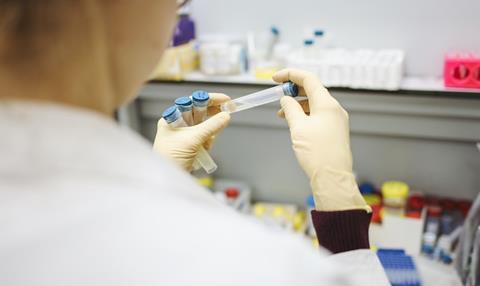Campden BRI has developed a new test procedure to determine whether air cleaning systems can effectively inactivate and remove the virus that causes Covid-19 from surfaces and the air.

It comes as food businesses attempt to protect their workforces with these systems which are sometimes marketed as being effective against SARS-CoV-2.
The Scientific Advisory Group for Emergencies (SAGE) has recently published a position paper which highlighted the need for these systems to be independently validated. The paper identified a lack of robust scientific data supporting the efficacy of such systems against relevant test organisms under realistic in-use conditions.
Annette Sansom, senior research officer at Campden BRI who led the development of the method, said: “Knowing coronaviruses to be spread by airborne transmission, many food businesses have put in place extra measures to protect their employees, including the installation of air cleaning systems. Some of these devices state effectiveness against SARS-CoV-2, but without these claims being validated, businesses can’t be sure that they’re protecting their staff.
“With an aerobiology laboratory capable of representing factory conditions, we steered our ongoing research project on the effective control of viruses towards a method that could validate these claims and help businesses create COVID-secure environments.”
“Having a method that can replicate real-life conditions is key to ensuring an air cleaning system can effectively remove SARS-CoV-2 in that environment.”
The new method uses a surrogate organism, structurally similar to SARS-CoV-2, in a specialist aerobiology laboratory to validate air cleaning systems on a scale not replicated elsewhere in the UK.
The test itself has been developed to adapt to various environments seen throughout the food and drink industry. For example, as meat and poultry factories are kept cold to prevent the growth of Listeria, the aerobiology laboratory can be chilled to assess an air cleaner’s effectiveness in these conditions.
Sansom continued: “Having a method that can replicate real-life conditions is key to ensuring an air cleaning system can effectively remove SARS-CoV-2 in that environment.”
SAGE highlighted that the application of these technologies - which include UV-C light, plasma, filters and chemical sprays - may be a useful strategy to reduce airborne transmission risks in poorly ventilated spaces.
Rob Limburn, microbiology group manager at Campden BRI who helped develop the validation method, said: “Some air cleaning systems produce ozone and/or other potentially hazardous by-products, such as CO2, during operation. It’s therefore important that such devices are tested to ensure that levels of these substances do not exceed recommended maximum levels under in-use conditions.”
Limburn continued: “We’ve found that the ‘next virus’ is a real concern for many food businesses and is partly the reason why they’re considering installing these systems. They’re thinking of both the current health crisis and future pandemics.”
This story was originally published on a previous version of the Meat Management website and so there may be some missing images and formatting issues.















